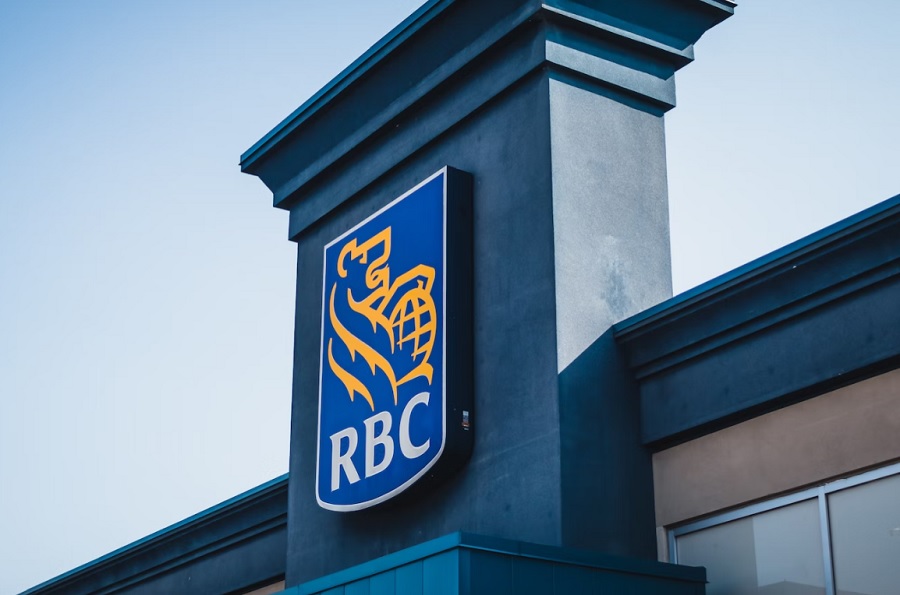Ruth Saldanha: Hello, and welcome to our limited time series "The Morningstar Canada Stocks Outlook for 2023," where we will speak with Morningstar equity analysts and find out what they expect in the new year. Today, Eric Compton is here to discuss Canadian banks, a hot dividend favorite for Canadian investors. Eric, thank you so much for being here today.
Eric Compton: Yeah, thanks for having me.
2022 Was Difficult for Canadian Bank Stocks
Saldanha: So, how have the Canadian banks performed in 2022? Was the performance in line with your expectations?
Compton: Yeah. So, 2022 was definitely, I would say, a more difficult year for the markets in general. The Canadian markets on average are roughly flat for the year, maybe down slightly, and for most of the year, the Canadian banks roughly tracked with the overall Canadian indexes. However, Q4 earnings was a little bit disappointing and so, they didn't react super well to that. So, towards the end of the year, you are starting to see a bit of slight underperformance for the bank stocks.
Heading into the year, we didn't see a ton of undervaluation for the Canadian banks. Half of them were roughly trading right at 1x price to fair value, which implies that we don't expect super outsized returns, and roughly half of them were roughly 5% to 10% undervalued. So, slight undervaluation, but not a lot. So, I would say, roughly in line with expectations to slightly missing them a bit. The biggest myth so far has been with Bank of Nova Scotia (BNS). We can get into that a little bit. But yeah, a little bit harder for the banks and for markets on average in 2022. We weren't expecting anything amazing and so far, they have kind of delivered that, maybe slightly underdelivered.
Expect More Pain for Canadian Bank Stocks in 2023
Saldanha: So, going ahead for 2023, what can investors expect?
Compton: So, 2023 is going to be, I think, another interesting year. So, towards the end of 2022 what we saw were some headwinds starting to emerge and I think 2023 is going to be just the continuation of that theme. So, we think loan growth is going to start slowing down in 2023 materially. So, a lot of the banks in 2022 had double-digit mid-teens loan growth, so 14%, 15% for a lot of them on average. We think that's probably going to be cut in half in 2023. So, we're looking for something closer to maybe 6% average loan growth. So, that's going to cut down revenue growth quite a bit. That's one headwind that's emerging.
Another headwind is just from higher rates. So, the central bank of Canada just did another 50-basis-point hike just the other day. They kind of signaled that that might be the last one. Not for sure. No one knows for sure. But it's getting close to the end for that. And higher rates because they've happened so fast for the Canadian banks you've actually seen net interest margins start to either compress for some or the expansion of them really start to slow down. And so, that's meant that net interest income hasn't grown as fast, which is another headwind for revenue. So, we expect to see some of that also in 2023.
We're also going to see, I think, a weaker fee environment. The fee environment was a bit weaker towards the second half of 2022. Not a great capital markets environment, not as many deals happening. Because of just lower market levels wealth fees came under a bit of pressure. So, I think, 2023, you're going to see another year of some pressure on – or not as healthy of a fee environment. Combining still okay loan growth with some less NIM expansion and kind of a weak fee environment, we still think you see some revenue growth. We have like, call it, 5% to 7% on average. Combined with that, we also see mid-single-digit expense growth. And so, it's just going to be not as strong of a year as I think some investors are typically used to seeing on just the revenue and expense front. And then, we also think recession risk is another thing that's going to start to really come up in 2023. And because of that, we expect higher provisioning levels. We think reserve levels are going to have to go up for the banks, and eventually, you're going to start to see some normalization in credit costs.
Hard to predict the exact timing of it as always, but we think 2023, you're going to start to see that play out. And so, you combine that with the revenue and expense outlook, we actually expect EPS to be flat to even down for most of the banks in 2023. So, not going to be, I think, the most fun year on a fundamentals basis for the Canadian banks and for markets in general, but definitely for the Canadian banks.
What Risks Should Investors Watch With Canadian Bank Stocks?
Saldanha: You mentioned some risk like compressions of margins, reduced fees, and perhaps a recession. Are these the major risks you're keeping an eye on? Or are there some others as well that investors should focus?
Compton: Yeah. So, those are a lot of the big risks we would look at. Just, yeah, recession risks for sure. Revenues are going to get, I think, a little harder to predict just because of how rates are flowing through. No one knows exactly what loan growth is going to look like and how fast it's going to slow down. So, that makes revenues a little bit harder to predict. We had expenses growing, like I said, mid-single-digits, which is a little bit faster than what you've seen in some years in the past. There's some inflation risk to that. It's hard to predict exactly how much expenses will go up just because of inflation feeding through into things like higher wages, for example. So, there could be some upside risks to expenses. A couple of the banks, I think, have some unique acquisition execution risks. So, that could be another thing to pay attention to for banks like Toronto Dominion (TD), Bank of Montreal (BMO) are two of the ones going through major acquisitions next year. And Royal Bank of Canada (RY) actually just announced the HSBC Canada acquisition. So, another one where you're going to see, I think, some execution risks pop up.
Other risks – also looking at – actually, the regulators just announced an increase to some of the capital buffers for the Canadian banks. So, that's another one banks are going to have to build up 50 basis points more of regulatory capital in 2023. That probably impacts BMO the most, just with some of their current capital levels and having to build up for their acquisition. That's another risk. You also have the recovery dividend. So, banks are going to have to pay a little bit more in taxes next year, especially. So, those are the risks we look out for. None of them that really worry us too much. We still think Canadian banks are in a good position from just capital strength that, we think they're going to weather any sort of recession. We think recession will probably be relatively mild. But those are the things that could affect EPS outlooks, things like that.
RBC Has Most Room for Dividend Growth
Saldanha: One of the most important things for Canadian investors at least is dividends. So, what's the dividend outlook for Canadian banks in 2023?
Compton: Yeah. So, dividend growth was pretty strong last year. In fiscal 2022, average dividend growth was closer to 8%, so that high-single-digit range, which is a decent year for dividend growth for the Canadian banks. We think there's definitely still room for growth in 2023. Some of that growth is already baked in a bit just because of the dividend hikes in the second half of 2022. And so, just some of that roll over into 2023 is going to get some natural year-over-year growth on a full year basis. We still think you'll see some dividend hikes in addition to that in 2023, but growth is going to be a little bit less than what it was in 2022. So, we're bringing down average growth level from around 8% in 2022 to closer to 5% in 2023. We think Royal Bank of Canada probably has the most room for dividend growth. If we were going to look for maybe an outlier on the growth side, I think Royal Bank of Canada would be our pick. Part of that is, they've got some room to move up the payout ratio, they'll have decent EPS strength relative to peers, and the HSBC acquisition isn't as large as some of the other acquisitions some of the other banks are trying to pull off. If we were looking for a negative outlier, I think Scotia Bank might struggle the most with dividend growth, still some growth, but just less than peers. So, all the other ones are pretty close to each other. So, that's how I would rank order them.
Top Canadian Bank Stock Pick for 2023
Saldanha: So, finally, with all this said, what's your top Canadian bank pick for 2023?
Compton: Yeah. So, for 2023, I'm sticking with National Bank of Canada (NA). I know we've talked about this one for a while. It's actually been a top performer over the last two and three-year periods. So, they've done pretty well. And we're sticking to that one. Why do we like National Bank of Canada? They are the second most undervalued name on my list at the moment just behind Canadian Imperial Bank of Commerce or CIBC (CM). So, on just a relative valuation, that spectrum, they look relatively attractive compared to peers. Combine that with they are a little bit smaller, so they tend to get a little bit less attention. I think I've said this in the past, but just less attention gives more opportunity I think for investors to find some mispricing.
And the other things I like about National Bank of Canada is – of the cheaper bank stocks, they just have less other bad things going on. Or maybe bad things is too strong of a word – but less other things that they're having to deal with. So, other stocks that look relatively cheap – I already mentioned CIBC. They've got I think some revenue and expense issues to figure out. So, that could be an overhang on the stock until they start to figure that out. Scotiabank is another one that's gotten cheaper in the recent past, and they just had a recent management transition. They've also got higher emerging market exposure. CIBC also has higher Canadian mortgage exposure. And so, I think, National Bank of Canada is just cheaper on a relative basis without some of those other things that you have to worry about. So, that's why I like them heading into 2023. If you're feeling a little more adventurous, maybe give CIBC a look. Like I said, they've got a little bit more going on. I wouldn't call it a turnaround, but there's a couple of things they have to figure out, I think, before the market is going to like them again. But they are also the cheapest stock on my list right now. So, you're getting what you pay for. And if they do figure some of those things out, I think there is a better chance that they could revalue higher relative to peers.
Saldanha: Great. Thank you so much for joining us today, Eric.
Compton: Great. Thanks for having me.
Saldanha: More analysts covering Canadian stocks will be joining me to chat about their expectations for 2023. So, stay tuned. For Morningstar, I'm Ruth Saldanha.






















